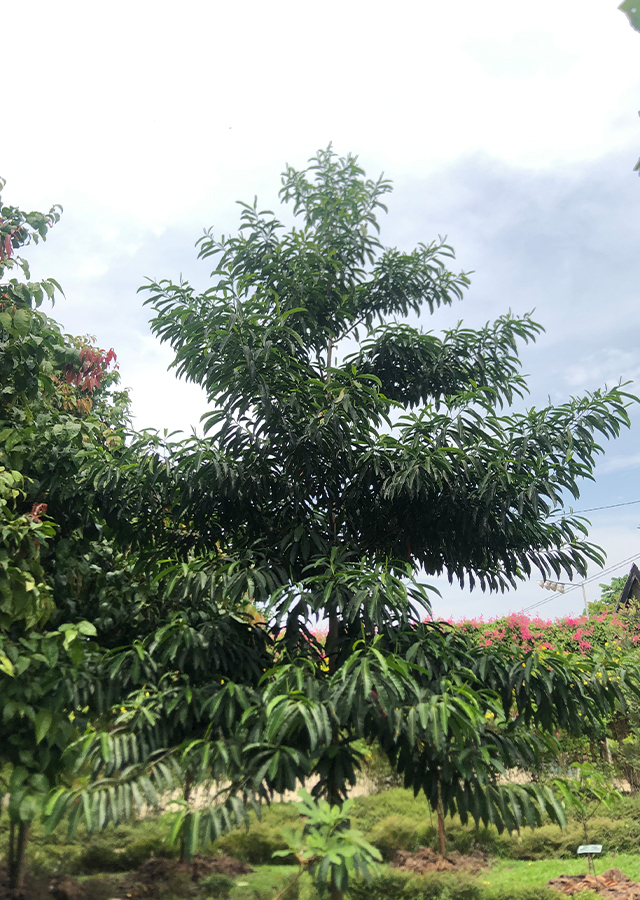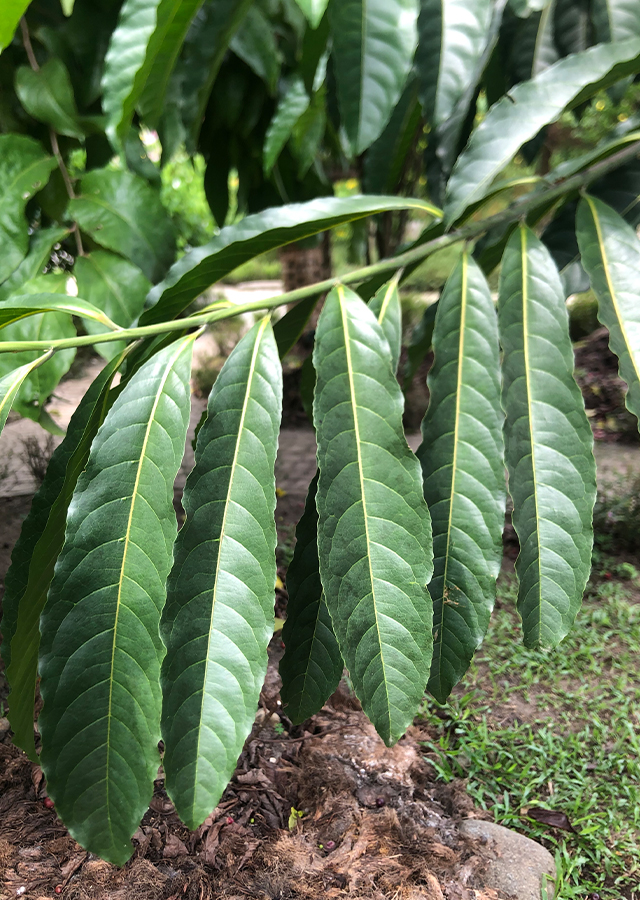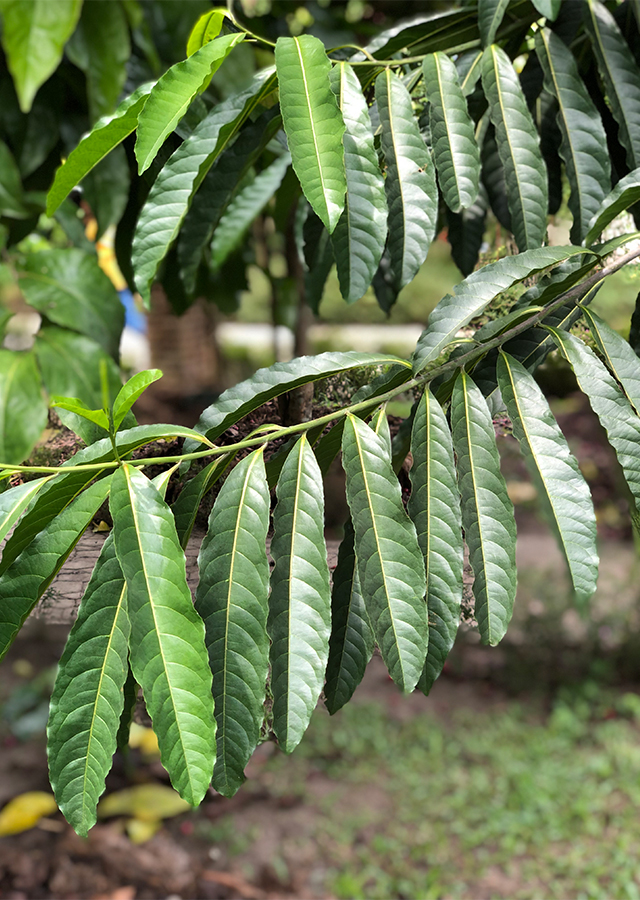Traditional Herbs from Elaeocarpus sphaericus
What is Elaeocarpus sphaericus Looks like??



Parts of Elaeocarpus sphaericus that could be used
- Leaves", "Seeds", "Bark", "Fruit", "Sap
Elaeocarpus sphaericus Distribution
Ganitri is a type of tree native to Indonesia which has been developed into a multi-purpose tree. Ganitri grows widely in Southeast Asia. There are approximately 350 species distributed from Madagascar, Southern China, India, Bangladesh, Nepal, Pakistan, Indonesia, Malaysia, Myanmar, Sri Lanka, Thailand, Australia and the Pacific Islands. Around 70% of ganitri trees are found in Indonesia and many are planted in Central Java, Sumatra, Kalimantan, Bali and Timor. This plant has high religious value and medicinal value. In India, according to Hinduism, this plant is considered a sacred tree belonging to the Lord Shiva and as a link between heaven and earth. Since prehistoric times, ganitri has been widely used in the treatment of anxiety, depression, hypertension, migraines and various other diseases. The dried fruit or seeds are believed to have electromagnetic and electrical properties that can provide some healing powers, as well as having a calming effect and the ability to reduce body temperature. Apart from that, ganitri is also known as a protective tree, and functions as a pollutant absorber. The fruit can be consumed, and the seeds are used as beads to make rosaries, prayer beads, buttons and other crafts. Ganitri trees are also usually harvested for their wood and used to make upper building beams in house buildings.Agroecology of Elaeocarpus sphaericus
Ganitri is a humid tropical and subtropical plant. Generally found in secondary forests, mountain rainforests and broadleaf valleys at an altitude of 400-1,300 m above sea level. In the Himalayas, ganitri grows abundantly at an altitude of 2,000 m above sea level. Meanwhile in Java, ganitri is found at altitudes of less than 1,200 m above sea level (especially 500-1,000 m above sea level). It grows best in areas where the annual daytime temperature is in the range of 18-28 �C, but can tolerate 8-38 �C. °C, with an average annual rainfall in the range of 1,500-3,000 mm, but can tolerate 1,000-3,500 mm. Likes a position in full sun but can tolerate some shade. It also grows well in fertile, humus-rich, well-drained soil and a soil pH in the range of 5.5-6.5, but can tolerate 4.5-7.5. Ganitri plants are drought resistant and can grow well in open and disturbed locations.
Morphology of Elaeocarpus sphaericus
- Stilt roots. Roots can rise high near the trunk and spread out along the surface of the soil.\u00a0
- Cylindrical trunk with a rough texture, fissured with white-gray to brown bark, has grayish-brown branches . The branchlets are villous and yellowish brown in color.\u00a0
- The leaves are arranged alternately (alternate), dark green, shiny, ovate-oval in shape. to oval-lanceolate,\u00a0asymmetrical, base broadly cuneate, leaf tip sharp or blunt,\u00a0edge of leaf serrated, petiole about 1 - 1.5 cm. Old leaves are red before falling off, both surfaces are villous when young, smooth when mature, 10-13 lateral veins per side, slightly prominent abaxially.\u00a0Has a slightly bitter taste\u00a0and odorless.
- Flowers are white, petals\u00a05, borne in axillary inflorescences about 2-4 cm long, petals\u00a0divided at the tip into 4 or 5 lobes, stamens 25-50 and hairy at the at the tip, the ovary is hairy.
- Fruit\u00a0seeds, round in shape, green when young then turns purplish blue and mealy when ripe. The fruit consists of five or six carpels, each carpel has one large seed. translucent. The entire surface of the seed has holes and threaded grooves as if eaten by worms so it looks beautiful as if it were engraved.
Cultivation of Elaeocarpus sphaericus
- Plant propagation is through seeds and branch cuttings, but the cutting method is not always successful.
- Ganitri seeds have a hard shell. Bury the seeds\u00a0in the ground and heat them with fire on top, or crack them (very carefully so as not to damaging the seeds) to allow moisture to enter can help speed up germination.\u00a0Sow the seeds in a shaded container Generally they will germinate after 3-4 months.\u00a0Seeds that germinates at the 2 or 3 leaf stage\u00a0ready for planting in the field after about 8 months.
- Seeding prefers a clay or loamy medium, slightly acidic (6.0-6.3) to neutral (6.3-7.8 ) and well-drained soil. Shading conditions are also necessary to provide an optimal environment for seed germination because the gestation period can vary from a minimum of 45 days to more than a year, dense canopy cover is more preferred for the growth of ganitri seedlings.
- Planting is done by making a planting hole 30 x 30 x 30 cm.\u00a0The recommended planting distance is 6 x 6 m because it is considered sufficient for the development of the canopy.
Elaeocarpus sphaericus, more details :
Chemical Content of Elaeocarpus sphaericusSteroids, saponin glycosides, flavonoids, tannins (e.g., geranin and 8, 4, B-trimethoxy geranine), phenolic compounds, alkaloids (elaeokanin A, C, and D, (+)-elaeocarpine, elaeocarpenin, isoelaeocarpine, grandisine B, isoelaeocarpiline , grandisine D, elaeocarpidine, isoelaeocarpicine, grandisine F, grandisine A, grandisine C, grandisine E, habbemine B, habbemine A, grandisine G), indolizidine alkaloids (carpusinin A, carpusinin B, carpusinin C, epicarpusinin C, carpusinin D, carpusinin E, carpusidine),� pyrrolidine alkaloids (carpusinin F� and epicarpusinin F).
Benefits of Elaeocarpus sphaericus
Treats enlarged spleen, hypertension and heart disease, epilepsy, migraine, stomach ache, asthma, cough, bronchitis, neuralgia (nerve pain), anorexia (eating disorder), arthritis, liver disease, chest and shoulder pain. Overcoming stress, depression and various mental illnesses. It has activity as anticonvulsant, antihypertensive, antiepileptic, anticonvulsive, anticancer, antimicrobial, antidiabetic, antidepressant, analgesic, immunostimulant, anti-inflammatory and antioxidant.
Simplisia of Elaeocarpus sphaericus
Another Facts for Elaeocarpus sphaericus :
Synonym of Elaeocarpus sphaericusElaeocarpus angustifolius� Blume, Elaeocarpus grandis� F. Muell., Elaeocarpus ganitrus� Roxb. ex G.Don
Habitus of Elaeocarpus sphaericus
Tree. A large tree with a spreading, cone-shaped crown and can grow up to 35 m and a trunk diameter of up to 160 cm.
Habitat of Elaeocarpus sphaericus
- Forest
No comments:
Post a Comment